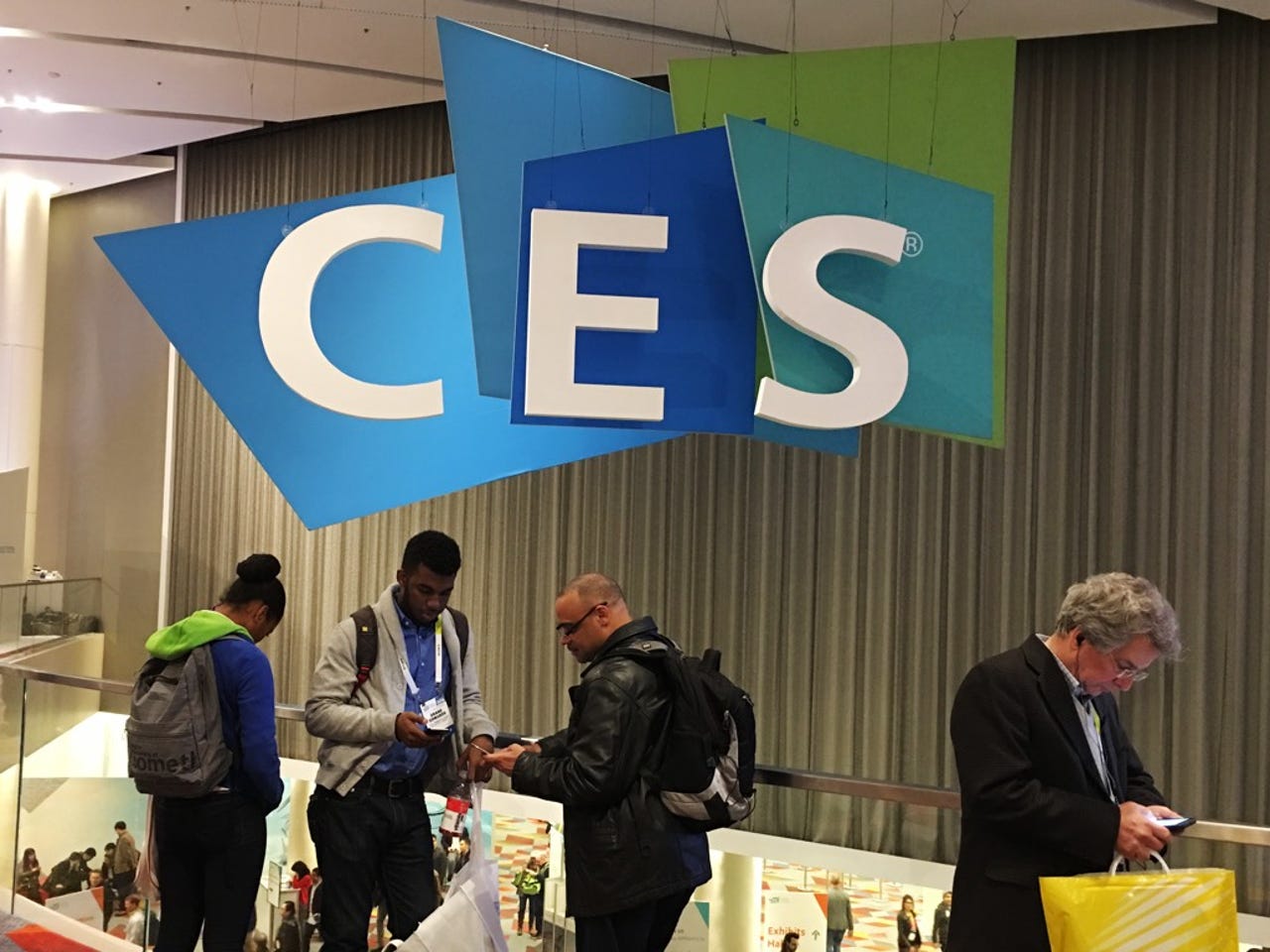CES 2017: The 4 business tech themes to watch


The 2017 edition of CES marks the 50th anniversary of the event, and once again ZDNet and TechRepublic will be covering it from all the angles that matter to businesses and professionals.
We'll be looking at the industry trends that will shape the business of technology, identifying the consumer tools that professionals will tap for productivity, and scoping out the technologies that enterprises will benefit from in the years ahead.
We'll have a combination of articles, videos, and photo galleries across both sites all week. As we head into the big event, here are the four most important themes you should keep an eye on.
1. IoT eclipses PCs and phones
There was a time, after Comdex died, that CES became a major showcase for new PCs. Mobile technologies later stole center stage at CES when the smartphone and tablet boom took off. Both of those waves have crested and washed ashore.
CES 2017 will be dominated by the Internet of Things -- drones, VR/AR headsets, wearables, rideables, self-driving cars, smart home appliances, smart city technologies, and new things we never imagined we'd see at CES.
SEE: Internet of Things: The Security Challenge(ZDNet/TechRepublic special report)
There are currently over 5 billion IoT devices active in the world. By 2020, Gartner predicts that number will number will jump to over 40 billion. IoT is the force that will spread the digital revolution to every corner of the earth and CES 2017 will showcase all its weird and powerful iterations.
2. Self-driving cars usher in the AI era
Even though CES happens just a week before the auto industry's enormous Detroit Auto Show, it has emerged as a critical car tech event ever since Ford became the first automaker to do a major product announcement at CES in 2006. CES is where automakers talk about autonomous vehicles, electric cars, infotainment systems, and other new technologies that impact how people interact with their vehicles.
Expect the main story at CES 2017 to center around self-driving cars. Artificial intelligence was the hottest topic in tech in 2016, and autonomous vehicles are the most powerful example of AI in action in a product that everyone can understand. With government regulations and the auto insurance industry moving toward embracing self-driving cars, the technology is poised for big breakthroughs in the next several years.
SEE: How to Implement AI and Machine Learning (ZDNet/TechRepublic special report)
Look for the automakers to jockey for attention at CES 2017 as they each try to position themselves as a leader in a self-driving cars. But beyond that, think of autonomous vehicles as a harbinger of the kinds of AI-powered products we're likely to see a lot more of at CES in the future.
3. Wearables re-emerge, all grown up
If you go back 2-3 years ago at CES, all the buzz centered around wearable devices and 3D printing. Both had retreated to the periphery by last year, and 3D printing will recede deeper into the shadows at CES 2017.
However, wearables are poised to break out beyond me-too fitness bands and lackluster smart watches. FitBit and Garmin are pushing new boundaries in the functionality of wearable fitness devices, even if they still lack style. Samsung continues to design its smartwatches to look and feel more like real watches than little smartphones on your arm -- and it's promoting them heavily at CES 2017.
But, the maturation of wearables will be seen in two important developments: 1) the services surrounding them, and 2) the migration beyond the wrist.
SEE: Wearables: Fit For Business? (ZDNet/TechRepublic special report)
Corporations have started embracing wearable tracking as a way to encourage a healthier workforce, and some even offer prizes or health care discounts to employees who participate in corporate wellness programs -- mostly tracked through wearable tech. This is turning the top wearables into valuable professional devices.
Wearables at CES 2017 will also benefit from the resurgence of smart glasses, especially aimed at enterprise uses, and the continued emergence of smart clothing powered by companies such as Under Armour, which understands more than any company that data is the real magic behind wearables.
4. Augmented reality flexes for professionals
Google Glass turned out to be an epic failure that is still morphing itself into an enterprise product. Microsoft Hololens remains a fascinating-but-limited experiment that remains at least a year or two away from being a real product. Nevertheless, both of these products have fired the imagination of the tech industry and the public about what's possible with augmented reality.
The biggest challenge for AR is that, when it comes to design, it has a higher bar to clear than its cousin virtual reality. Because VR is immersive and normally meant to be used by one person alone in a room, it's not a big deal that it's an unsightly rectangle strapped to a person's face. But, AR is normally worn around other people and while moving around in the real world. As a result, even a relatively minimal product like Google Glass was too awkward for most people to wear in public.
SEE: VR and AR: The Business Reality (ZDNet/TechRepublic special report)
CES 2017 will see the emergence of new products in the AR space. There will be unobtrusive new designs and powerful smart glasses with new capabilities. The enterprise is already on board, because when you're doing an emergency fix on an oil rig or remotely assisting a life-saving surgery, you don't really care about how awkward the product looks and feels. But, for AR to reach a broader audience of consumers and professionals, it will need a design that looks more and more like normal glasses and less like a science experiment. Keep that in mind when you see the new AR products that come out of CES this year.